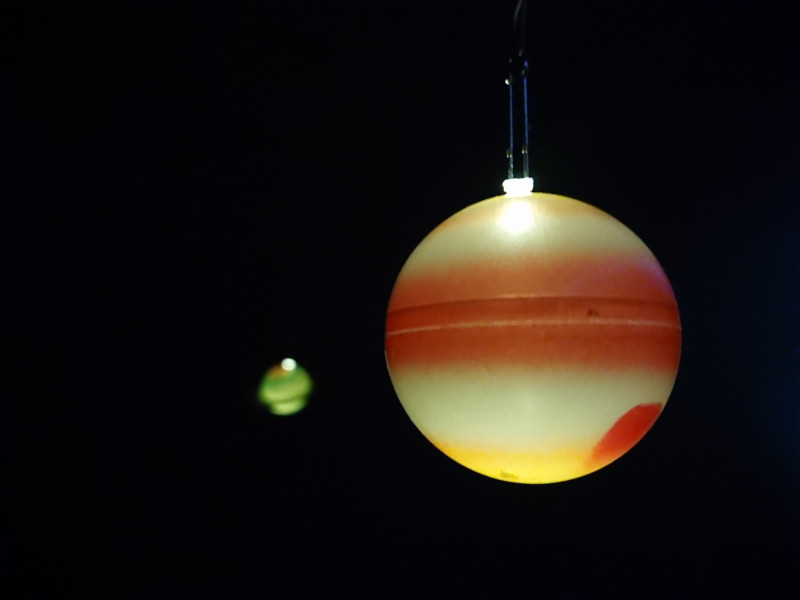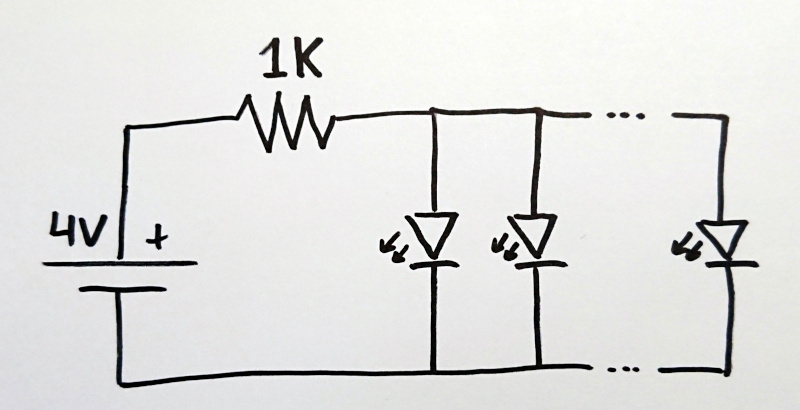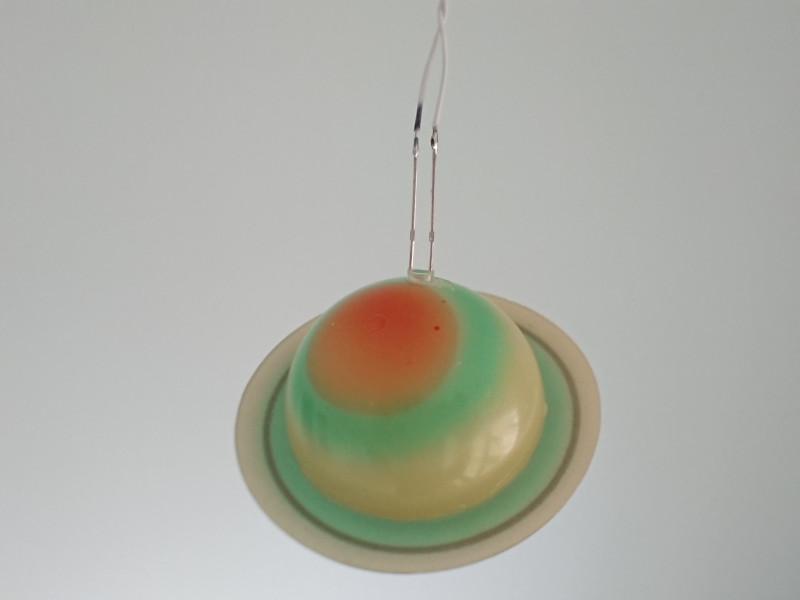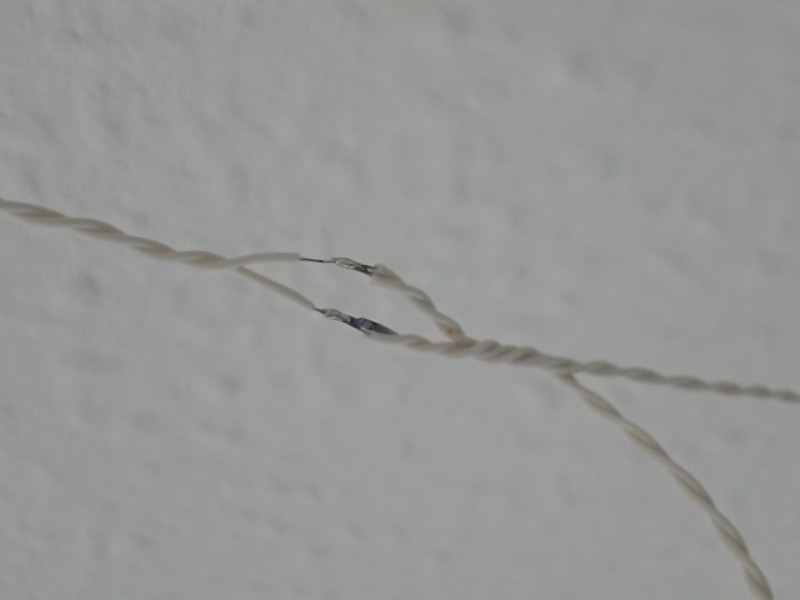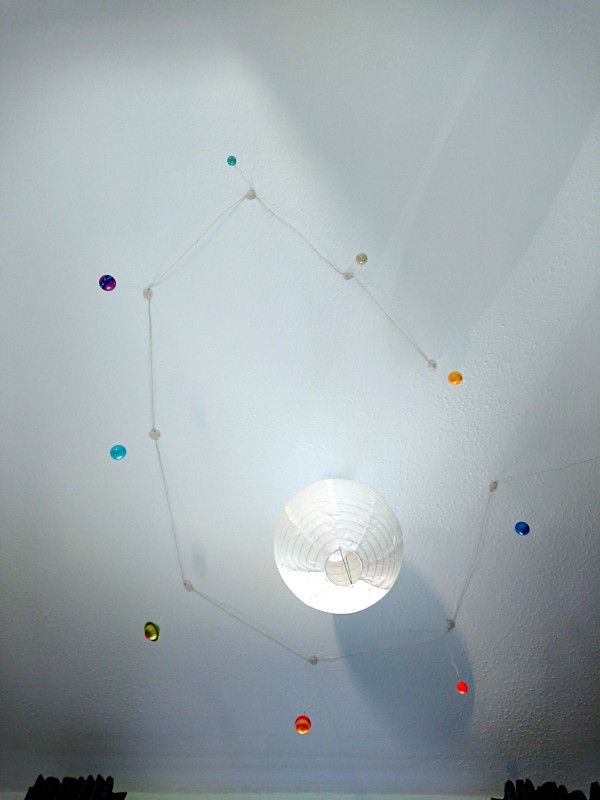Waterstones and many others sell these little planets that glow in the dark and make for an interesting ceiling feature. But wouldn’t it be nice to light them up properly? I bought a few components and spent a few hours connecting them. I am quite pleased with the result:
I used 3mm warm white LEDs. Their nominal voltage is about 3V, but their full brightness would be unsuitable for a dark room, which means they need to be driven with a much lower current than the standard 20mA. I went for a single 1KΩ resistor, which makes the circuit consume less than 2mA. The power source is a 3×AA battery box with a switch. With three rechargeable NiMH batteries, this is about 4V. The LEDs appeared nearly identical when testing them individually, so I wired them up in parallel. In hindsight, I might have saved a few battery hours by connecting them in series and reducing the size of the resistor (or a series-parallel combination as in fairy light circuits).
Connecting the LEDs to the planets was the most fun part of this little project. I cut off the little hooks that used to hold the nylon thread and discovered that they were glued into a hole that happened to be exactly 3mm in diameter. This was such a snug fit that I did not need to glue the LEDs in place. I simply plugged them in. For the bigger planets, I needed to drill a little, as the hole underneath the nylon hook did not become exposed when cutting off the hooks. For the other planets, the small leg of the hooks can simply be pushed into the planet after cutting it off.
The least fun part was twisting all that wire. I used 30 AWG wire, because that was the best compromise between aesthetics and my clumsiness and limited time budget. Thin enamelled copper wire might look even better during the day. Below you can see the parallel connection of a planet (main strand running left to right, planet branching off to the bottom). To avoid going mad when twisting the wire, I soldered one planet at a time and twisted the resulting ~50cm of additional main wire and ~25cm of branching wire for each planet. I did not bother insultating anything, as wires are held in place with white tack on the ceiling, and LED legs are stiff enough not to touch each other.
The final result in daylight:
Luckily, IKEA sells cheap lamp shades that look just like the sun – with a little squinting.

